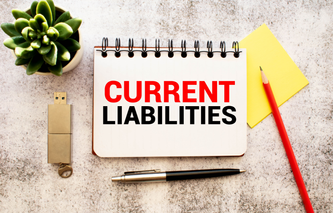Definition
The financial accounting term liability is used to describe the debt of a corporation that results from a transaction involving the transfer of an asset or the provision of a service. Liabilities are reported on a company's balance sheet.
Calculation
Liabilities = Assets - Owner's Equity
Explanation
Nearly all businesses have liabilities; even the most successful and profitable of companies will make purchases on credit. Most companies also find it desirable to borrow money as a means of expanding operations more rapidly. The borrowed money can be used to purchase new machinery, or finance projects, which will produce additional items to be sold to customers.
The categories of liabilities appearing on a balance sheet are shown below. Short term obligations are listed before those of longer terms.
Current Liabilities: includes accounts payable, notes payable, income taxes payable, accrued expenses and the current portion of long term debt
Long Term Debt: includes mortgage and other long-term debt obligations such as bonds issued to the marketplace.
Example
The table below illustrates the format for the liabilities section of the balance sheet.
Current Liabilities | |
Accounts Payable | $2,674,000 |
Short / Current Long Term Debt | $682,000 |
Other Current Liabilities | $2,085,000 |
Total Current Liabilities | $5,441,000 |
Long Term Debt | $4,484,000 |
Other Liabilities | $5,829,000 |
Deferred Long Term Liability Charges | $0 |
Minority Interest | $442,000 |
Negative Goodwill | $0 |
Total Liabilities | $16,196,000 |
.png)




